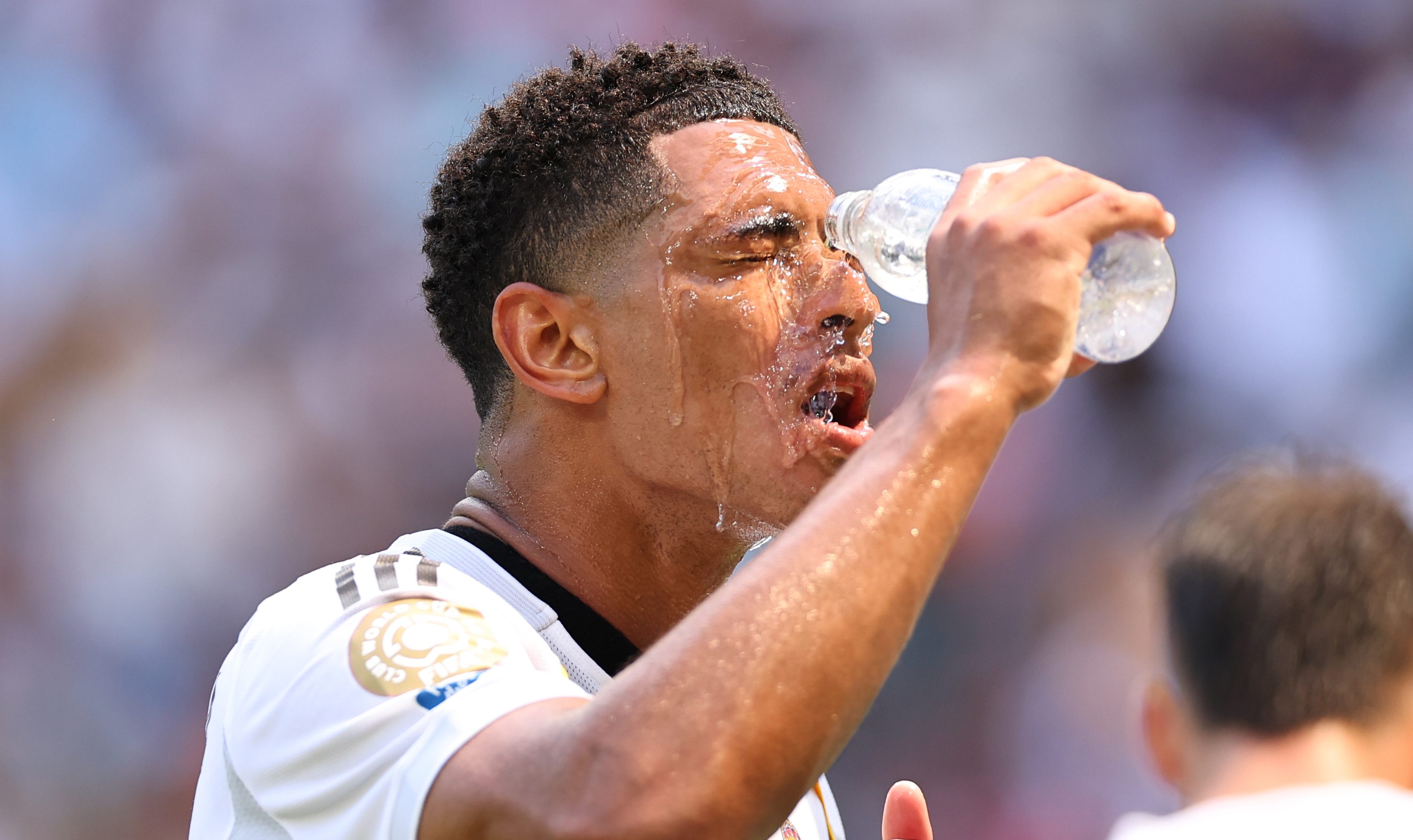As a relentless heat wave grips much of the United States, players and fans at the FIFA Club World Cup are feeling the burn—literally. Extreme temperatures are not only affecting performance but also raising concerns for future tournaments, including the 2026 World Cup.
Players, fans at Club World Cup coping with high temperatures amid heat wave

Key Takeaways:
- Players and fans are grappling with extreme heat at the FIFA Club World Cup.
- High temperatures are disrupting matches, practices, and fan experiences.
- Concerns are rising about similar conditions for the 2026 World Cup.
- FIFA mandates cooling breaks to mitigate heat risks.
- Climate change may continue to challenge major sporting events.
A Searing Challenge on the Pitch
Substitutes seeking refuge in locker rooms, abandoned practice sessions, and sweat-soaked jerseys—these are the scenes unfolding at the FIFA Club World Cup as a relentless heat wave engulfs much of the United States. Players and fans alike are grappling with oppressive temperatures that are testing endurance and raising alarms.
“It’s impossible, it’s terribly hot. My toes were sore, even my toenails were hurting; I couldn’t stop or start,” lamented Atlético’s Marcos Llorente after a match against Paris Saint-Germain. “In the end, it’s incredible, but since it’s the same for everyone, there’s no excuse.”
Under the Heat Dome
A “heat dome” of high pressure has settled over the central and eastern United States, pushing temperatures into the 90s Fahrenheit and beyond. In Charlotte, North Carolina, the thermometer read 97 degrees Fahrenheit (36 Celsius) at game time during Bayern Munich’s clash with Benfica.
“In Europe, it’s more of a dry heat, and this is more of a humid heat. I think it’s going to hit them twice as hard,” noted fan Tyler Fernando before the match.
Adjusting Play and Practice
The grueling conditions have forced teams to modify their routines. Chelsea cut short a practice session in Philadelphia, where temperatures soared into the 90s. “I always try to avoid excuses; I always try to be honest. It’s not about excuses, it’s about reality,” said Chelsea coach Enzo Maresca. “But we are here, and we’re trying to do our best.”
Borussia Dortmund took unprecedented measures during a match against the Mamelodi Sundowns. “Our subs watched the first half from inside the locker room to avoid the blazing sun at TQL Stadium—never seen that before, but in this heat, it absolutely makes sense,” the team posted on social media.
Coach Niko Kovac explained, “We had cooling sticks to cool the players down. We had them waiting in the dressing room with the air conditioning. It’s not only about tactics but also about minimizing the load, minimizing the stress.”
Fans Seek Relief
Spectators are also battling the elements. At the Auckland City versus Boca Juniors match in Nashville, temperatures climbed into the upper 90s. Male spectators went shirtless, and fans crowded into shaded sections in search of relief.
Miami-Dade Fire Rescue took to social media to urge fans to exercise caution ahead of Inter Miami’s match against Palmeiras. Safety guidelines and heat mitigation advice were shared by teams to help fans cope with the extreme weather.
FIFA’s Heat Guidelines
FIFA mandates cooling breaks when the Wet Bulb Globe Temperature—a measure that accounts for temperature, humidity, wind speed, sun angle, and cloud cover—reaches 89.6 degrees Fahrenheit (32 Celsius). These pauses usually occur around the 30th and 75th minutes of play.
Cooling breaks were first prominently featured during the 2008 Olympic final in Beijing, where on-field temperatures soared to 107 degrees Fahrenheit (41.6 Celsius). The 2014 World Cup in Brazil further normalized the practice after a labor court ordered hydration breaks under specific heat conditions.
Looking Ahead to 2026
The current conditions are prompting concerns about the 2026 World Cup, which the United States will co-host with Canada and Mexico. Sixteen cities are set to welcome the world’s best players, but with climate patterns becoming increasingly unpredictable, organizers may face similar challenges.
“It’s not just high temperatures that can impact summer tournaments,” the article notes, citing five Club World Cup matches delayed by thunderstorms. Mexico’s venues could contend with hurricane season, and summer temperatures in Monterrey average in the 90s.
Climate Change and the Future of Sport
The heat wave underscores a broader issue: the impact of climate change on global sporting events. Peter Crisp from Fossil Free Football criticized FIFA’s approach, saying, “Scheduling matches in no-shade stadiums in the middle of the day and promoting oil-dependent sponsors shows FIFA is dangerously out of touch with the threat extreme heat poses to its major summer tournaments.”
A Call for Proactive Measures
As the Club World Cup continues under sweltering skies, the experiences of players and fans highlight the pressing need for proactive measures to address extreme weather. The lessons learned could prove vital in safeguarding the health and enjoyment of all participants in future tournaments.
Conclusion
The beautiful game is facing an unwelcome opponent: a changing climate that introduces new variables to the sport’s most prestigious events. The current heat wave serves as a stark reminder that adaptability and foresight are crucial as organizers plan for the spectacles that captivate the world.











